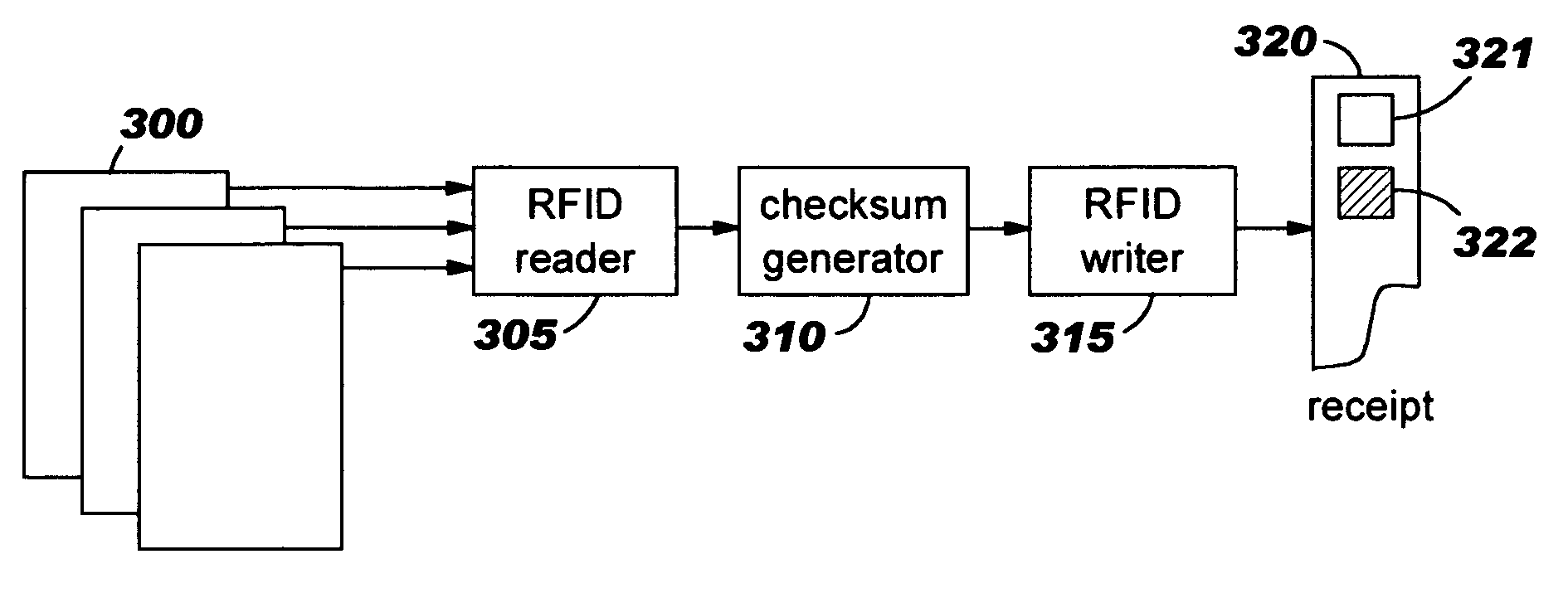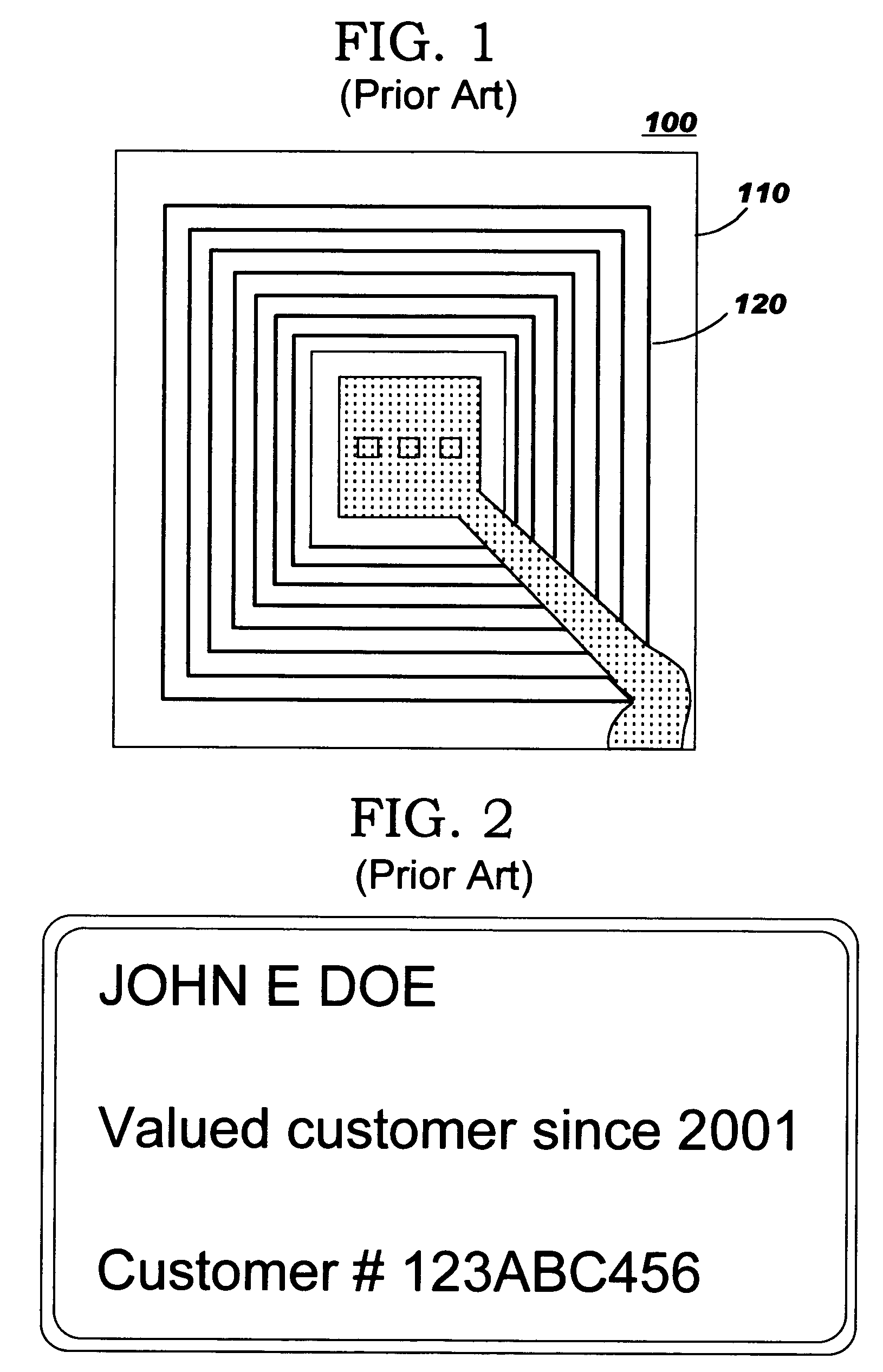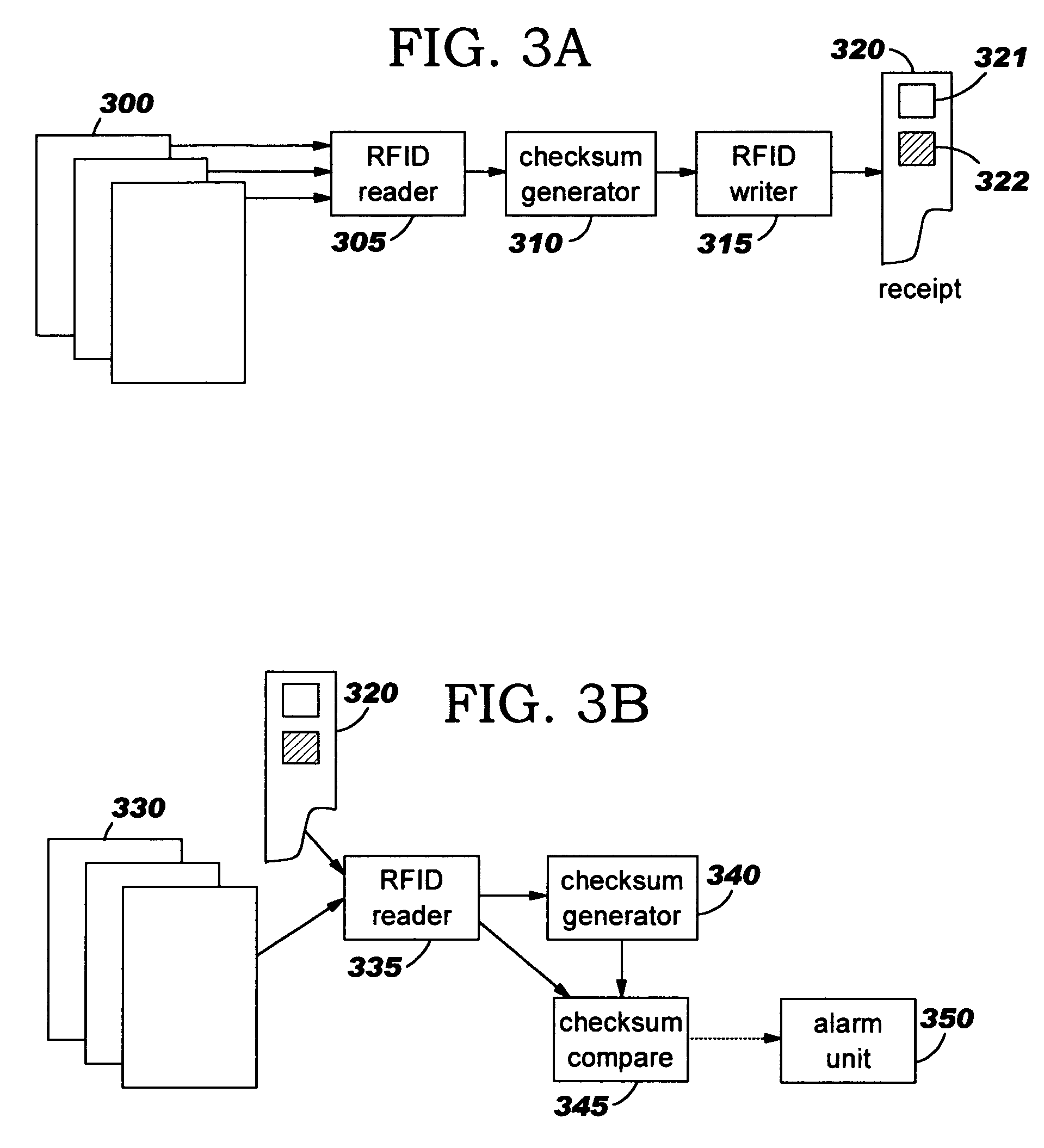Using radio frequency identification with transaction-specific correlator values written on transaction receipts to detect and/or prevent theft and shoplifting
- Summary
- Abstract
- Description
- Claims
- Application Information
AI Technical Summary
Benefits of technology
Problems solved by technology
Method used
Image
Examples
fourth embodiment
[0049] In one aspect of this fourth embodiment, items that are in the shopper's possession upon entry to the retailer's premises and that have RFID tags on them are tracked. When the shopper exits the premises, the comparison among correlators (Block 1070) excludes those items which the shopper brought onto the premises. The items that are potentially stolen are then those items that (1) the shopper did not bring with him, and (2) have either no correlator or a correlator that does not match the other correlators.
[0050] Alternatively, if the items brought onto the premises by the shopper are not known, then the comparison among correlators (Block 1070) preferably excludes any items which can be determined (e.g., by consulting the database 970) to be previous purchases, as described above.
[0051] In a fifth preferred embodiment, which may be implemented using components shown generally in FIGS. 11A and 11B and logic as depicted in FIGS. 12A and 12B, information written on a receipt (...
third embodiment
[0056] The present invention may also be used to thwart other types of theft. For example, assume that a customer who just purchased a collection of items and obtained a receipt leaves the store, only to return a few minutes later and select the same collection of items, hoping the prior receipt will enable him to leave the store without paying for the second collection of items. Embodiments of the present invention will detect the new collection of items as not having been purchased, since the items do not bear the customer's loyalty card number (in the second preferred embodiment, described with reference to FIGS. 5A and 5B), the items do not bear a correlator matching the correlator on the receipt (in the third embodiment, described with reference to FIGS. 7A and 7B), the items do not bear identical correlators (in the fourth preferred embodiment, described with reference to FIGS. 9A and 9B), or the items' unique EPC numbers are not enumerated on the receipt (in the fifth preferr...
PUM
 Login to View More
Login to View More Abstract
Description
Claims
Application Information
 Login to View More
Login to View More - R&D
- Intellectual Property
- Life Sciences
- Materials
- Tech Scout
- Unparalleled Data Quality
- Higher Quality Content
- 60% Fewer Hallucinations
Browse by: Latest US Patents, China's latest patents, Technical Efficacy Thesaurus, Application Domain, Technology Topic, Popular Technical Reports.
© 2025 PatSnap. All rights reserved.Legal|Privacy policy|Modern Slavery Act Transparency Statement|Sitemap|About US| Contact US: help@patsnap.com



